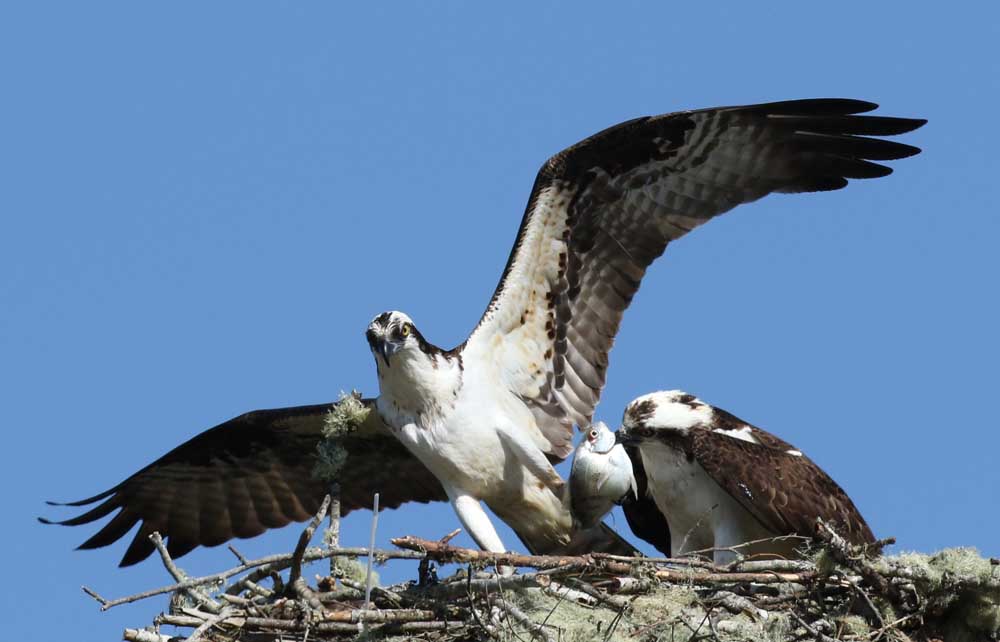The cam is off, but osprey tend their nest
Published 11:15 am Monday, April 20, 2020

- A male osprey brings a fish to the female at the Broadway Park nest.
The osprey cam at Broadway Park will not be running this year.
The camera appears to have been damaged sometime over the last year and isn’t functioning, the Necanicum Watershed Council’s executive director, Angie Reseland, said.
But life doesn’t stop for Seaside’s osprey pair at Broadway Park. They are busy redoing the nest and setting up shop for another clutch of young, photographer and naturalist Neal Maine said. He captured images of a male bird bringing fresh fish to the nest this month.
The return of the osprey to Seaside comes after careful efforts. The raptor, a cousin of the eagle, nested on a light pole on Broadway Park field. The pole came down after artificial turf was installed in 2011, displacing the osprey.
The nest later was placed on the trunk of a 60-foot hemlock tree donated by a local timber company. However, the trunk rotted, and a windstorm broke it in two places. In 2013 the nest was relocated to its present location.
That same year, a partnership between the Necanicum Watershed Council and the city brought a real-time webcam to to the nest, enabling viewers worldwide to study the raptors and their fledge.
The pole snapped in hurricane-force winds in 2016, spilling the nest on top of the pole and the camera. Once again donors provided funds for repairs.
Protected under the Migratory Bird Treaty Act of 1918, the osprey is not endangered or threatened under the U.S. Endangered Species Act, according to the Department of the Interior’s U.S. Geological Survey. An average-sized nest in Oregon weighs more than 260 pound and exceeds 40 inches in diameter.
Maine is tracking nine nest sites around the county, each located near lakes and waterways.
The female osprey at Broadway Park was most likely banded somewhere in the Willamette Valley before she could fly, Maine said, and is believed to be the same female at Broadway Park as last year, though without the osprey cam, precise identification is difficult.
Ospreys can live up to 25 years in the wild. Adults mate for life and return to the same nest each year, Maine added. Once the female has three or four eggs she will be on the nest for the next 28 or 29 days.
The watershed council plans to replace the camera after the current nesting season is over and will have a new camera up and running next year, Reseland said.




